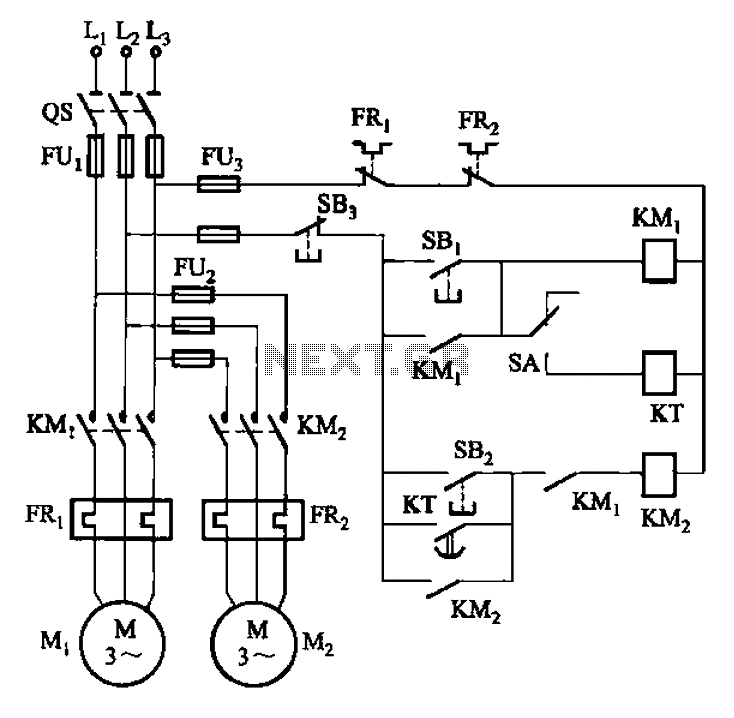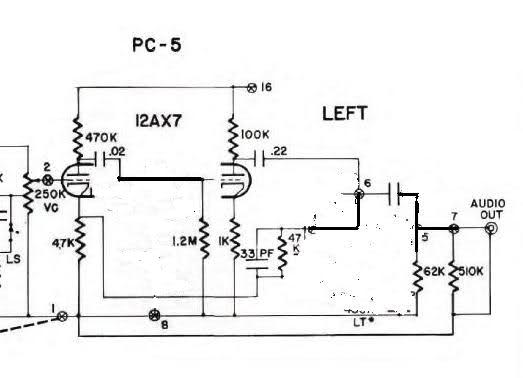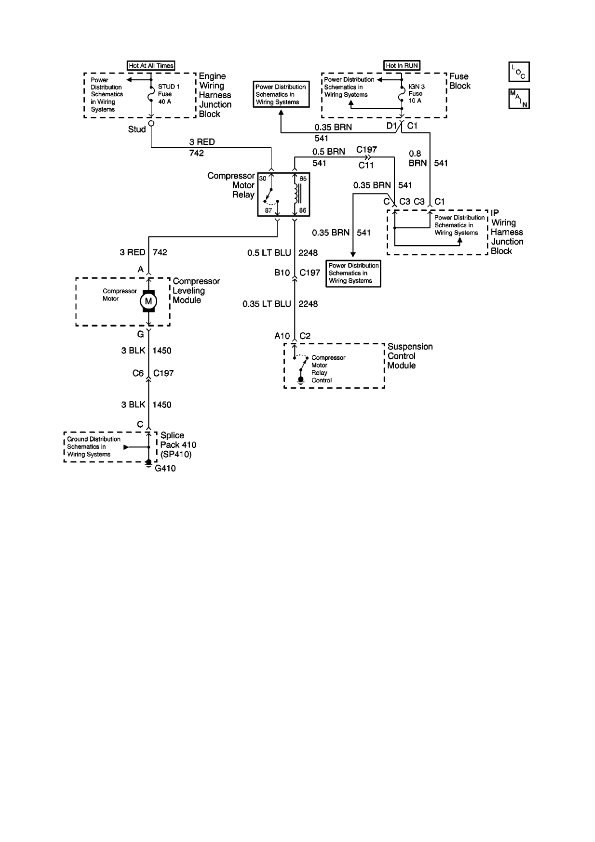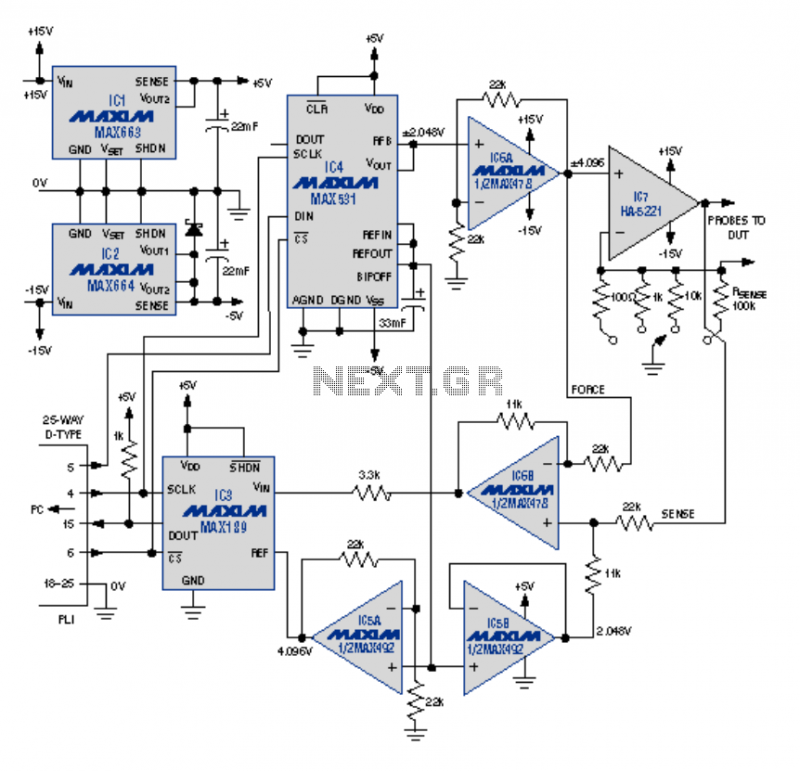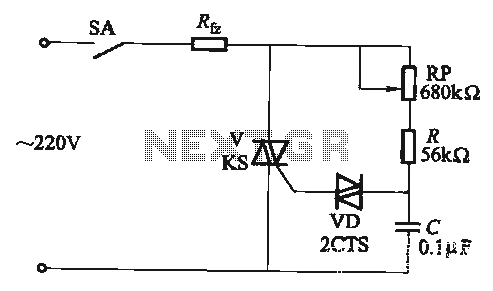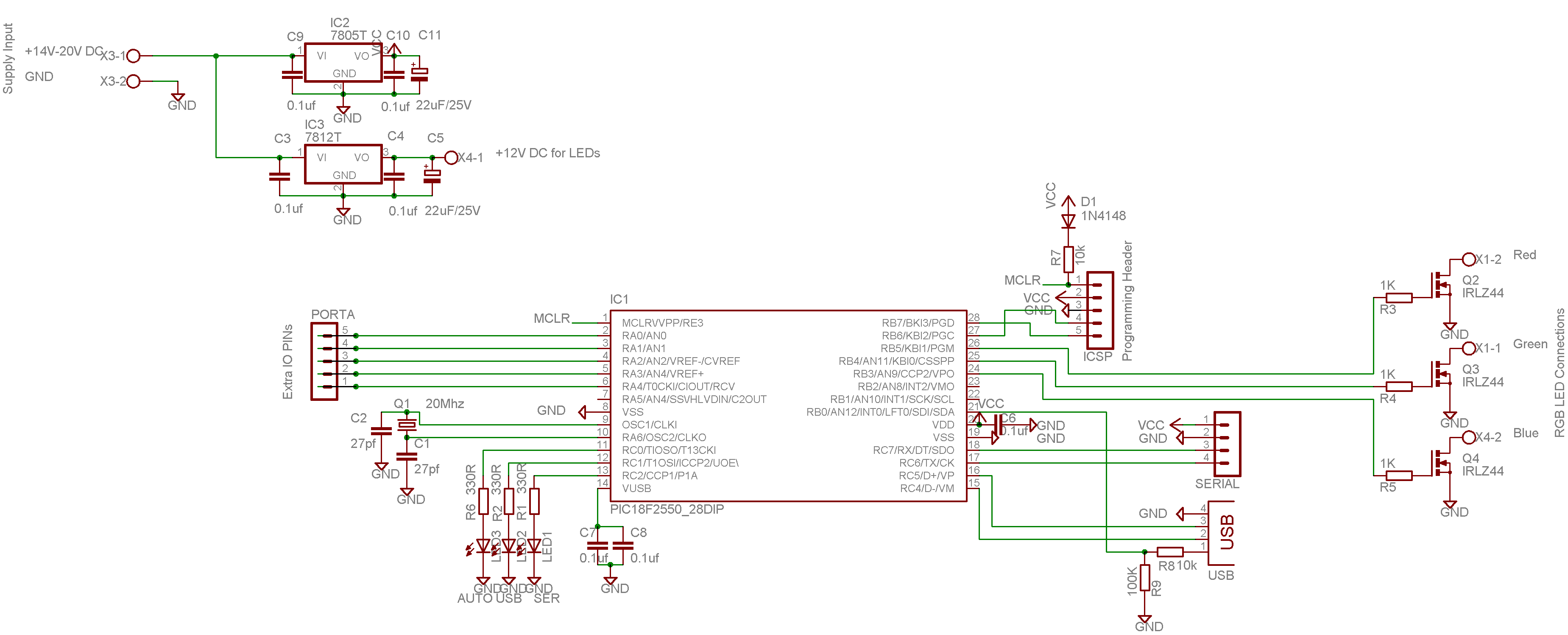
Changing the sensitivity of manual controls
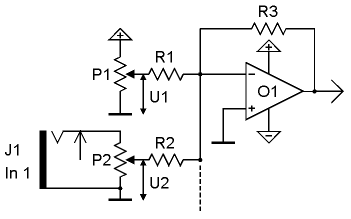
P1 serves as the manual control for the corresponding parameter, such as tuning for a Voltage-Controlled Oscillator (VCO), frequency for a Voltage-Controlled Filter (VCF), manual gain for a Voltage-Controlled Amplifier (VCA), or manual phase shift for a phaser. P1 generates the voltage U1. J1 functions as the first input socket for external control voltage, while P2 acts as the corresponding attenuator, outputting voltage U2. Additional voltage inputs, with or without attenuators, may be available, such as multiple control voltage inputs for frequency control of a VCF. The dashed line in the schematic represents the common point in the circuit where all control voltages are summed. The output voltage of the circuit (from O1) is utilized to control the relevant parameter (tuning, filter frequency, gain, etc.) of the module in question. The output voltage is defined by the relationships R3/R1 and R3/R2, which determine the sensitivity of the corresponding control (P1) and input (J1/P2). For instance, if all resistors are set to 47k, a common value in the A-100 series, the sensitivity for each input is unity. Provided that R3 remains constant, the resistors R1 and R2 dictate the sensitivity of the respective control and input. Decreasing the resistance of R1 or R2 increases the sensitivity of the manual control (P1) or input (J1/P2), while increasing the resistance reduces sensitivity. To adjust the sensitivity of a control knob (P1) or CV input (J1/P2), the corresponding resistor R1 or R2 needs to be replaced. The audio input circuit for most A-100 modules is similar, but the manual control P1 is not present, as a DC offset is not applicable for audio inputs, which are AC signals. Typically, only one audio input is available, although exceptions exist, such as the VCA A-130 and A-131, and the signal processor A-109. To adjust the sensitivity of an audio input, the resistor R2 connected to the slider P2 of the audio input must be replaced; a smaller value will increase sensitivity, potentially leading to clipping or distortion at higher input levels. The initial A-100 VCFs and VCAs (A-120, A-121, A-122, and early versions of A-130 and A-131) have been designed to prevent distortion with standard A-100 signals (e.g., VCO). Reducing the input resistors will also permit distortion for these modules. Furthermore, the input resistors of CV or audio mixers (e.g., A-138a/b) can be modified to enable "real" amplification (i.e., greater than 1). The factory resistor values in the mixer modules A-138a/b allow a maximum amplification of approximately 1, which is not true amplification. Lowering the input resistors (R2 type) or increasing the feedback resistor (R3 type) will enhance the amplification of the circuit. The factory values for the corresponding resistors (R1, R2, R3) in all modules can be found in the A-100 service manual, typically in the 100k range (approximately 47k to 220k).
The circuit described utilizes a manual control interface (P1) to adjust various parameters of a modular synthesizer, allowing for real-time manipulation of sound characteristics. The voltage outputs generated by P1 and attenuator P2 are critical for interfacing with other components within the system. The inclusion of multiple control voltage inputs (J1) enhances the flexibility of the circuit, enabling simultaneous adjustments from various sources.
The summation point, indicated by the dashed line, plays a pivotal role in combining control voltages, ensuring that the output voltage from the operational amplifier (O1) accurately reflects the desired settings from all inputs. The sensitivity adjustments provided by resistors R1 and R2 allow for customization of the control response to suit different musical applications, making the module adaptable to varying performance needs.
In audio applications, the absence of manual control (P1) underscores the circuit's focus on handling AC signals, which require careful consideration of input levels to avoid distortion. The design of the audio input circuitry is specifically tailored to maintain signal integrity, particularly for early A-100 modules. Adjustments to the input resistors can significantly affect the performance, allowing for tailored amplification characteristics.
Overall, the modular design philosophy of the A-100 series enables users to modify and optimize their synthesizer configurations, making it a versatile platform for sound design and musical expression. The detailed resistor configuration and their impact on circuit performance highlight the importance of understanding component interactions in analog synthesizer design.P1 is the manual control of the corresponding parameter (e. g. tune for a VCO, frequency for a VCF, manual gain for a VCA, manual phase shift for a phaser and so on). P1 generates the voltage U1. J1 is the (first) input socket for the external control voltage. P2 is the corresponding attenuator. The slider of P2 outputs the voltage U2. Additional C V inputs with our without attenuators may be available (e. g. two or more CV inputs for frequency control for a VCF). The dashed line in the picture is the common point in the circuit where all CV`s are added. The output voltage of the circuit (output of O1) is used to control the corresponding parameter (tune, filter frequency, gain. ) of the module in question. The output voltage is defined by: The relations R3/R1 resp. R3/R2 determine the sensitivity of the corresponding control (P1) resp. input (J1/P2). If for example all resistors are 47k (a common value in the A-100) the sensitivity is 1 for each input.
Provided that R3 remains unchanged the resistors R1 and R2 determine the sensitivity of the corresponding control resp. input. Reducing the resistance of R1 resp. R2 increases the sensitivity of the manual control (P1) resp. input (J1/P2). Increasing the resistance of R1 resp. R2 reduces the sensitivity. To modify the sensitivity of a control knob (P1) or CV input (J1/P2) the corresponding resistor R1 resp.
R2 simply has to be changed. The audio input circuit for most A-100 modules is similar but the manual control P1 is absent (a DC offset would not make sense for an audio input, audio signals are AC signals). Normally only one audio input is available but there are exceptions (e. g. VCA A-130 and A-131, signal processor A-109). To change the sensitivity of an audio input simply the resistor R2 connected to the slider P2 of the audio input has to be replace.
A smaller value will increase the sensitivity and consequently lead to clipping/distortion for higher input levels. Especially for the first A-100 VCFs and VCAs (A-120, A-121, A-122 and first versions of A-130, A-131) the audio inputs have been designed to avoid distortion with standard A-100 signals (e.
g. VCO). Lowering the input resistors will allow distortion for these moduls too. Even the input resistors of CV or audio mixers (e. g. A-138a/b) can be changed to allow "real" amplification (i. e. > 1). The factory values of the resistors in the mixer modules A-138a/b allow a maximum amplification of about 1 (which is not really amplification). Reducing the input resistors (R2 type) or increasing the feedback resistor (R3 type) will increase the amplification of the circuit.
The factory values of the corresponding resistors (R1, R2, R3) for all modules can be found in the A-100 service manual. Normally they are in the 100k range (~ 47k. 220k). 🔗 External reference
The circuit described utilizes a manual control interface (P1) to adjust various parameters of a modular synthesizer, allowing for real-time manipulation of sound characteristics. The voltage outputs generated by P1 and attenuator P2 are critical for interfacing with other components within the system. The inclusion of multiple control voltage inputs (J1) enhances the flexibility of the circuit, enabling simultaneous adjustments from various sources.
The summation point, indicated by the dashed line, plays a pivotal role in combining control voltages, ensuring that the output voltage from the operational amplifier (O1) accurately reflects the desired settings from all inputs. The sensitivity adjustments provided by resistors R1 and R2 allow for customization of the control response to suit different musical applications, making the module adaptable to varying performance needs.
In audio applications, the absence of manual control (P1) underscores the circuit's focus on handling AC signals, which require careful consideration of input levels to avoid distortion. The design of the audio input circuitry is specifically tailored to maintain signal integrity, particularly for early A-100 modules. Adjustments to the input resistors can significantly affect the performance, allowing for tailored amplification characteristics.
Overall, the modular design philosophy of the A-100 series enables users to modify and optimize their synthesizer configurations, making it a versatile platform for sound design and musical expression. The detailed resistor configuration and their impact on circuit performance highlight the importance of understanding component interactions in analog synthesizer design.P1 is the manual control of the corresponding parameter (e. g. tune for a VCO, frequency for a VCF, manual gain for a VCA, manual phase shift for a phaser and so on). P1 generates the voltage U1. J1 is the (first) input socket for the external control voltage. P2 is the corresponding attenuator. The slider of P2 outputs the voltage U2. Additional C V inputs with our without attenuators may be available (e. g. two or more CV inputs for frequency control for a VCF). The dashed line in the picture is the common point in the circuit where all CV`s are added. The output voltage of the circuit (output of O1) is used to control the corresponding parameter (tune, filter frequency, gain. ) of the module in question. The output voltage is defined by: The relations R3/R1 resp. R3/R2 determine the sensitivity of the corresponding control (P1) resp. input (J1/P2). If for example all resistors are 47k (a common value in the A-100) the sensitivity is 1 for each input.
Provided that R3 remains unchanged the resistors R1 and R2 determine the sensitivity of the corresponding control resp. input. Reducing the resistance of R1 resp. R2 increases the sensitivity of the manual control (P1) resp. input (J1/P2). Increasing the resistance of R1 resp. R2 reduces the sensitivity. To modify the sensitivity of a control knob (P1) or CV input (J1/P2) the corresponding resistor R1 resp.
R2 simply has to be changed. The audio input circuit for most A-100 modules is similar but the manual control P1 is absent (a DC offset would not make sense for an audio input, audio signals are AC signals). Normally only one audio input is available but there are exceptions (e. g. VCA A-130 and A-131, signal processor A-109). To change the sensitivity of an audio input simply the resistor R2 connected to the slider P2 of the audio input has to be replace.
A smaller value will increase the sensitivity and consequently lead to clipping/distortion for higher input levels. Especially for the first A-100 VCFs and VCAs (A-120, A-121, A-122 and first versions of A-130, A-131) the audio inputs have been designed to avoid distortion with standard A-100 signals (e.
g. VCO). Lowering the input resistors will allow distortion for these moduls too. Even the input resistors of CV or audio mixers (e. g. A-138a/b) can be changed to allow "real" amplification (i. e. > 1). The factory values of the resistors in the mixer modules A-138a/b allow a maximum amplification of about 1 (which is not really amplification). Reducing the input resistors (R2 type) or increasing the feedback resistor (R3 type) will increase the amplification of the circuit.
The factory values of the corresponding resistors (R1, R2, R3) for all modules can be found in the A-100 service manual. Normally they are in the 100k range (~ 47k. 220k). 🔗 External reference
